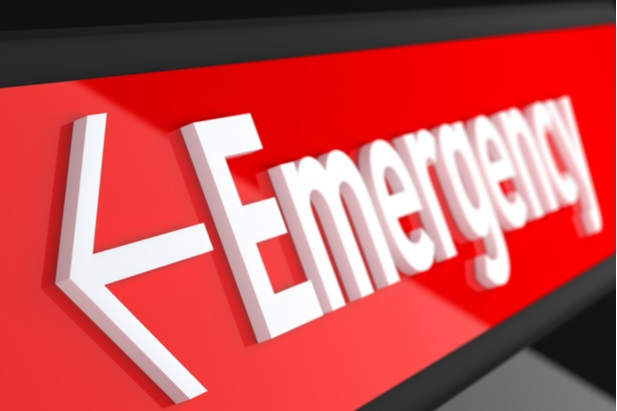 Emergency departments are a critical element of the U.S. health care safety net, addressing the acute medical complaints of all patients, regardless of insurance status. (Photo: Shutterstock)
Emergency departments are a critical element of the U.S. health care safety net, addressing the acute medical complaints of all patients, regardless of insurance status. (Photo: Shutterstock)Although urgent care centers are less expensive than lower-acuity emergency department (ED) visits, their use actually increases overall spending.
“We estimate that 37 additional urgent care center visits were associated with a reduction of a single lower-acuity ED visit,” according to a report in Health Affairs” “In addition, each $1,646 lower-acuity ED visit prevented was offset by a $6,327 increase in urgent care center costs. Therefore, despite a tenfold higher price per visit for EDs compared with urgent care centers, use of the centers increased net overall spending on lower-acuity care at EDs and urgent care centers.”
Related: Recognizing the value of urgent care centers in today’s health care environment
EDs are a critical element of the U.S. health care safety net, addressing the acute medical complaints of all patients, regardless of insurance status. However, ED visits are expensive, and many are for lower-acuity or nonurgent conditions, which seemingly do not require ED-level care.
To reduce spending, public and commercial insurers have implemented strategies to deter lower-acuity ED visits, including increasing copayments, denying payment for “inappropriate” visits and encouraging patients to use lower-cost alternative providers such as telemedicine and urgent care centers. Insurers have assumed that these alternatives save money by substituting for lower-acuity ED visits.
Surprisingly, there is little evidence to support that assumption. Certainly, the per visit price of these alternative care sites is lower. Therefore, if each visit to an alternative care site directly substitutes for an ED visit, this will result in savings. However, relative to EDs, the convenience and shorter wait times at these sites lower the nonfinancial cost of visits which should increase the quantity of services used if patients were previously staying home instead of seeking care.
The study found that by 2019, ED visits were approximately 10 times more expensive than urgent care center visits and that the opening of an urgent care center led to a decline in the number of ED visits. However, the study found the substitution ratio was high. The results suggest that using urgent care centers in isolation to reduce ED visits may be ineffective from a spending perspective. The possibility remains, however, that the availability of urgent care centers in a market, when combined with other interventions to assist patients in choosing care venues, could be effective in augmenting the substitution ratio.
“This study documents for the first time that urgent care centers are associated with increased overall costs for lower-acuity visits across the ED and urgent care settings,” the report concluded. “This reflects a substantial increase in access to unscheduled care, but it poses risks for health insurers and patients who must pay these increased costs. Beyond access, the clinical benefit of these additional visits to unscheduled care remains unknown.”
Read more:
"urgent" - Google News
April 09, 2021 at 08:56PM
https://ift.tt/3dSkarw
Urgent care centers deter emergency department use but increase overall spending - BenefitsPro
"urgent" - Google News
https://ift.tt/2ya063o
https://ift.tt/3d7MC6X
urgent
Bagikan Berita Ini















0 Response to "Urgent care centers deter emergency department use but increase overall spending - BenefitsPro"
Post a Comment